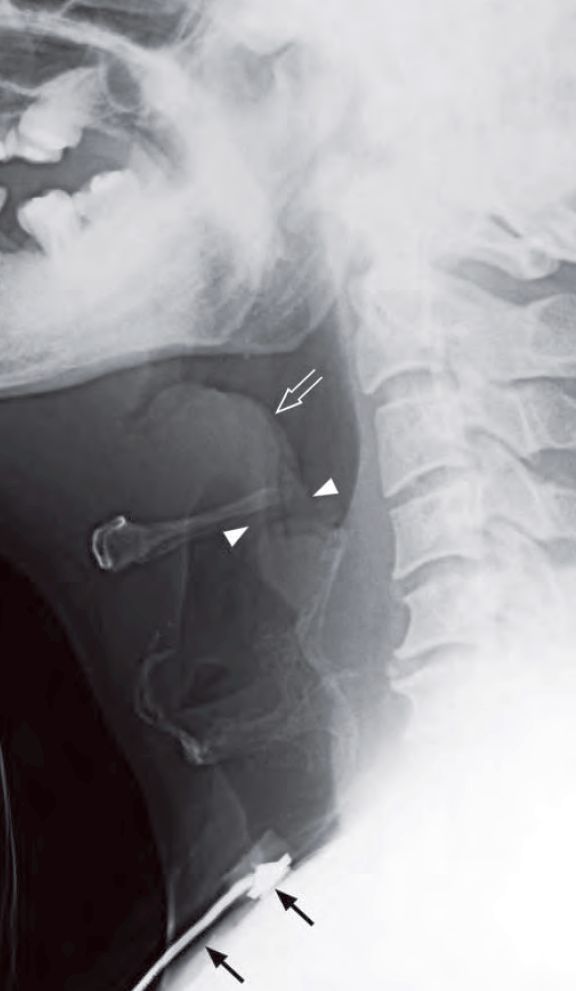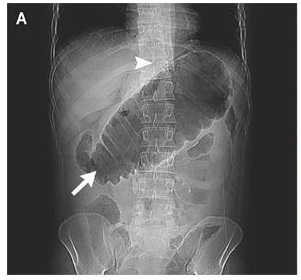This post is an answer to the Case – Severe Sore Throat and Painful Swallowing
X-ray interpretation
- Markedly swollen epiglottis with ‘thumb-printing’ appearance
- Thickening of aryepiglottic folds

Lateral radiograph of the neck shows a markedly thickened epiglottis (open arrow) – ‘thumb sign’. Also note the thickened aryepiglottic folds (arrowheads) due to tracking of the infection from epiglottis. Features are highly suggestive of acute epiglottitis. Note the tube in the trachea to maintain the air way (arrows).
Discussion
Acute epiglottitis is an acute, potentially fulminating infection of the upper airway and commonly occurs in children between 2 and 6 years of age (but can also occur in adults). The most common causative agent is Haemophilus influenzae type B.
If there is high clinical index of suspicion of acute epiglottitis, every effort should be made to minimize patient manipulation as this may exacerbate the degree of upper airway obstruction. Therefore a lateral radiograph of the neck helps to confirm the diagnosis without having to examine the epiglottis. Further imaging is usually not necessary as prompt treatment is instituted.
Retropharyngeal abscess and laryngotracheobronchitis (croup) share a common clinical presentation with acute epiglottitis. Plain radiograph may help to differentiate these conditions:
- Retropharyngeal abscess
- Widened retropharyngeal soft tissues
- Focal gas collection within the retropharyngeal soft tissues
- Laryngotracheobronchitis (croup)
- Narrowing of the subglottic airway (Steeple sign)
- Over-distension of the hypopharynx
- Normal epiglottis and retropharyngeal soft tissues
SIMILAR CASE: Steeple Sign of Croup

